Even if your dog spends most of his time inside the house, your backyard belongs to him. Your dog-friendly backyard should be a pleasant place where he can eat, play with his favorite toys, sleep, bask in the sunshine and even frolic in the rain. And, along with being dog-friendly, you want to make sure you are creating a dog-safe backyard free from toxic plants and other hazards!

It’s your job to make sure that he can do all this and more in a safe environment, where wild animals that might harm him find it almost impossible to get in, and where plants that might cause him problems are nowhere to be found. Even more importantly, you’ll need to make it difficult for him to find out what lies beyond the boundary you’ve created for him – or eliminate any reasons he might have to dig under or climb over the fence that separates his domain from the rest of the world.
To help you create a safe haven that your dog will love spending time in, DogTipper.com has collaborated with The Home Depot to build this guide covering each aspect of building the perfect dog-friendly backyard.
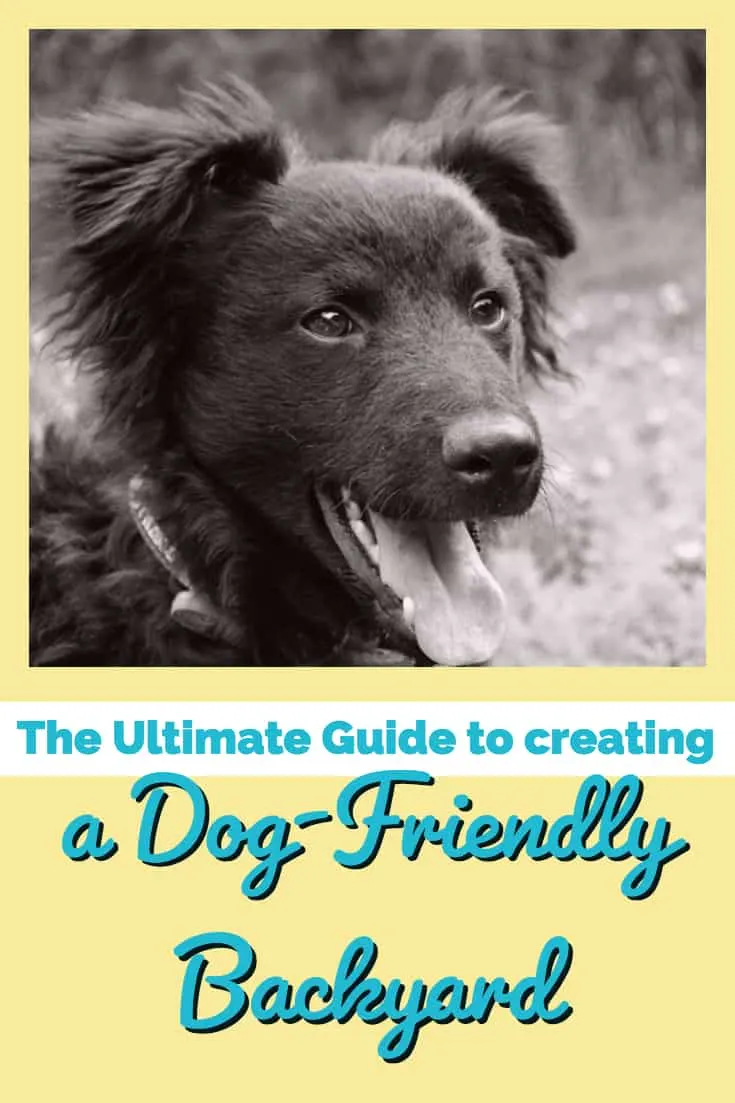
Why Dogs Leave their Yard
Dogs are social beings – they enjoy interacting with humans and with other animals. If you leave your best friend by himself all day, chances are that he’ll look for ways to find out what’s on the other side of the fence.
However, the need for companionship is not the only reason a dog seeks his freedom.
Dogs get bored.
Would you want to spend day after day in the same place, wondering what the rest of the world looked like? He wouldn’t either.
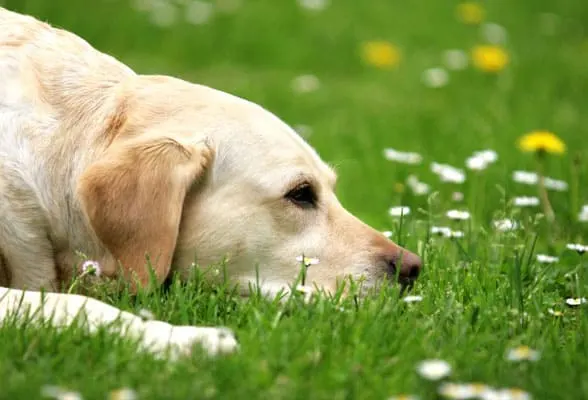
Dogs are naturally curious, and unless your best friend has some really fun dog toys (there are some great ideas available here) or a canine pal to hang out with, he’ll probably spend a lot of time trying to find a way to get to the other side of the fence.
Fortunately, there are things you can do to keep your dog from getting bored like leaving interactive toys for them to find.
Dogs get frightened.
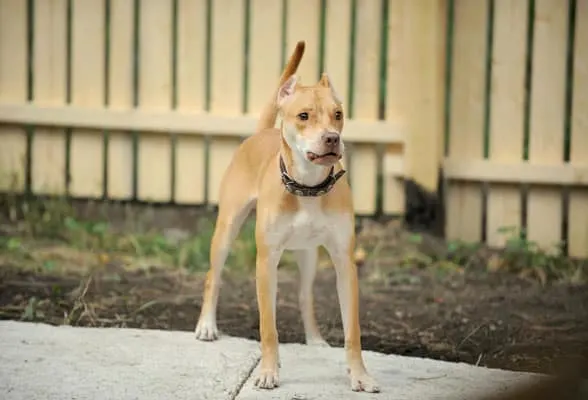
Loud sounds, bad weather and unfamiliar people in your house are all reasons that dogs seek solace somewhere outside the fence that surrounds your backyard. If you know what scares your dog, you can take steps to eliminate those things from his life.
You can’t do anything about the weather, of course, but you can provide a safe haven for your dog if he is troubled by the crash of thunder and the flash of lightning.
To find out more on techniques that will help address the fears and anxiety that dogs may have; Veterinary Partners has some suggestions.
Dogs go looking for love.
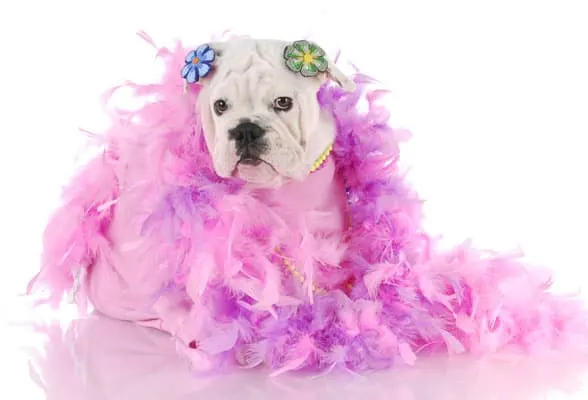
If your dog hasn’t been neutered, his escape plans might be based on finding a mate. By the same token, if you have a female dog that hasn’t been spayed, she might be getting visitors from the outside world.
The Humane Society gives several reasons one should neuter a male dog or spay a female here.
Dog Fence: Fence Me In
Your dog fence needs to do an effective job of keeping your dog in and other animals out.
If your dog does escape, finding him is always a bit of a nuisance, but the situation can develop into something more than a small problem: He could be hit by a car, get into a fight with another dog or a wild animal, or cause damage to someone else’s property. You might also have to pay a fine levied by the animal control agency that picks him up.
Each of these factors alone is enough reason to do your best to block all possible avenues of escape. Make the investment in securing your yard, and you’ll avoid both emotional and financial pitfalls down the road.
Make sure you dog can’t jump over the fence!
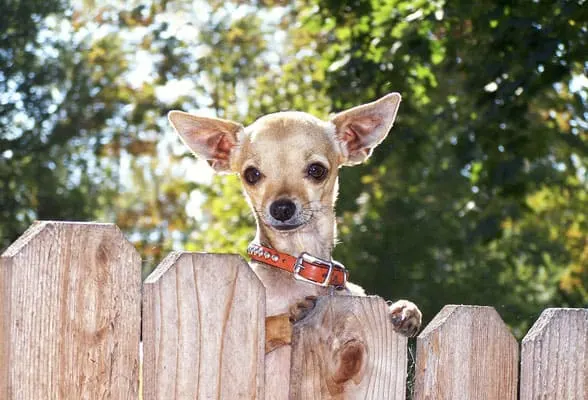
Some dogs are athletic enough to jump over a fence, but in most cases they get over the top by climbing.
To eliminate this option, cover the inside of the fence with a smooth surface such as plywood.
You also can add an extension that tilts inward at an angle to the top of the fence.
Take steps to keep your dog from digging under the fence.
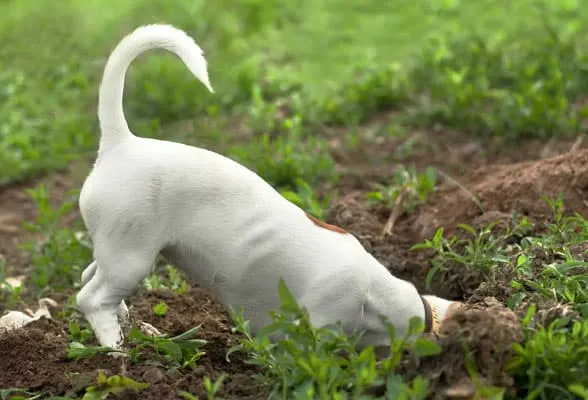
To keep your dog from digging out, bury chicken wire under the fence or place large rocks along the bottom edge.
You also can use chicken wire to keep your dog from digging inside the yard – in a flower bed, for example.
Fill the gaps between and beneath the fence.
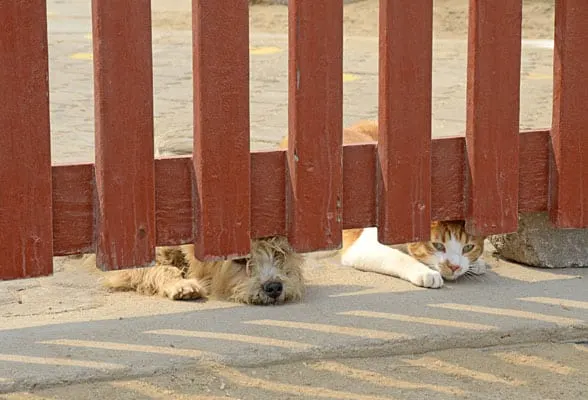
You’ll need to repair any holes in the fence and take care of any areas that might provide an opportunity for your dog to squeeze out, such as where the fence meets a gate or your house.
To find out how to maintain and repair your fence, click here.
Rebuild and repair your fence to keep your dog in.
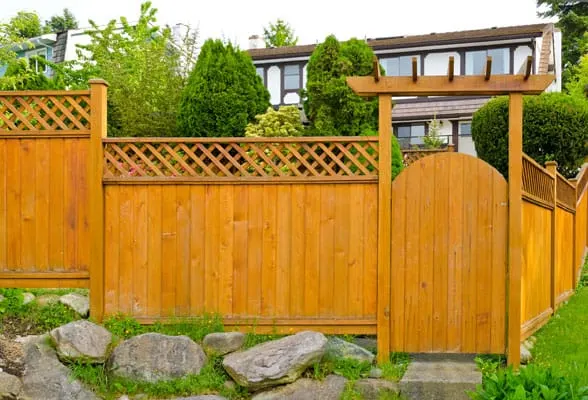
If your fence needs major repairs, replacing it might be a better option than trying to fix it. After you take the old fence down, your next job will be to install the posts, which entails a little more work than simply digging holes.
You can see some fence building choices here.
When tackling a larger project like rebuilding your fence, you may need to rent larger equipment like a hole digger for installing new posts.
Don’t Forget the Gate!
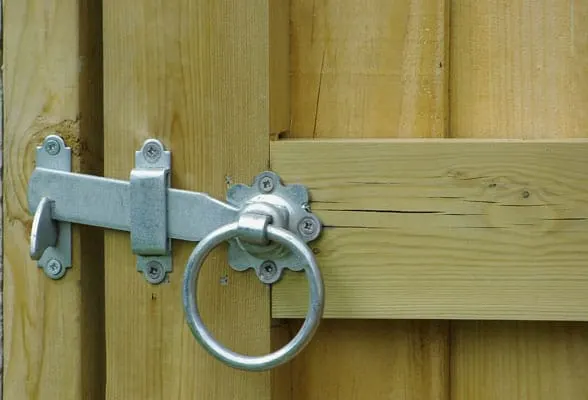
Some dogs are smart enough to figure out how to open a gate. If your dog is a budding Einstein, lock the gate with something more than just the built-in latch.
And if your kids can’t remember to close the gate, install a self-closing system that automatically shuts the gate when they go in or out. For instructions from sfgate.com on how to install a self-closing gate, click here.
Do you need a doggie door?
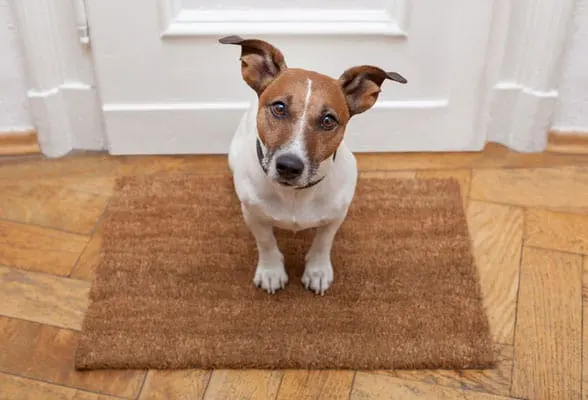
A doggie door is convenient for you and for your dog. He’ll be able to let himself out into the yard, and, if you’re not home, he’ll be able to get into the house if it starts to rain or if he simply wants to come inside and take a nap.
Inside the Yard
Theoretically, your dog should be safe in your yard if he can’t get out and other animals can’t get in. But what about plants and biting (and disease carrying critters)?
Before letting your dog run free, make sure that you reduce the possibility of threats to their health.
Watch out for plants harmful to dogs.

You certainly don’t want your dog to eat plants that don’t agree with her, causing problems such as vomiting, diarrhea, breathing issues, loss of appetite, depression, lethargy, burning of the mouth and even death.
Although harmful plants and fungi will vary with your climate and geographical location, some of the most notorious offenders include:
- Azaleas
- Some mushrooms
- Lilies
- Black walnuts
- Daffodils
- Sago palms
- Dumb cane
- Elephant ears
To find more about plants that can harm your dog, see our list of plants hazardous to dogs.
Safely Repelling Fleas and Ticks
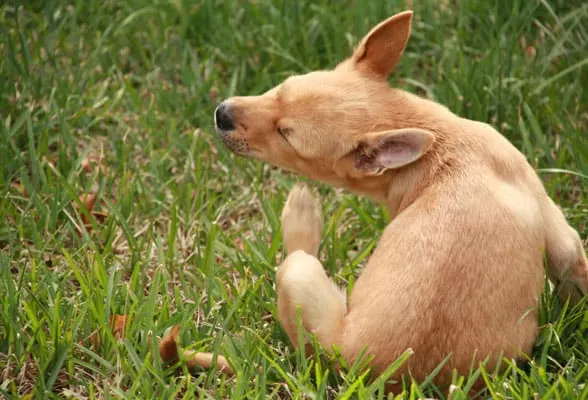
Insects can be a problem for your dog and for you, because he’ll bring them into the house with him, and getting rid of them can be a costly and toxic process.
Keeping the grass trimmed can do a lot to prevent flea and tick proliferation, as well as using non-toxic repellents such as beneficial nematodes in your yard and on your dog.
Finally, for your dog’s comfort, eliminate standing water to discourage mosquitoes from setting up shop in your yard. PetMD has some smart advice on controlling fleas and ticks in your yard.
Watch out for Snakes
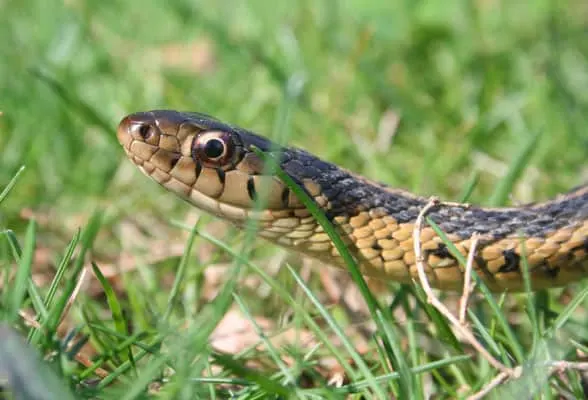
Keeping the backyard mowed and eliminating clutter such as piles of wood or leaves will help solve your flea and tick problem and also will go a long way toward keeping snakes away.
Though many snakes are not venomous, some are – and your dog won’t be able to tell the difference.
Avoid Cocoa Bean Mulch!
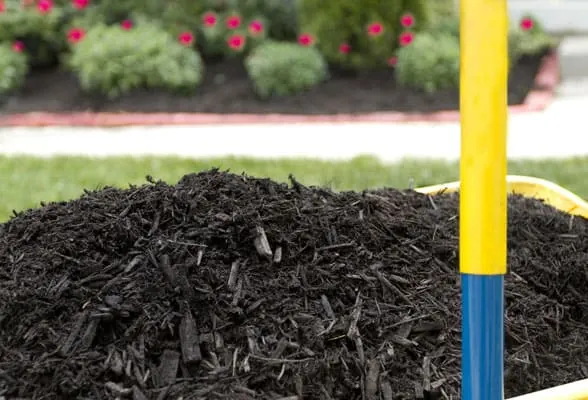
Made from cocoa shells, gardeners and landscapers favor this type of mulch because it smells good, retains moisture well and helps repel garden pests.
Unfortunately, it might also pose a danger to your dog. Read this article from Healthy Pets to find out why this cocoa bean mulch may be toxic to your pet.
Make Your Dog-Friendly Backyard a Fun Place
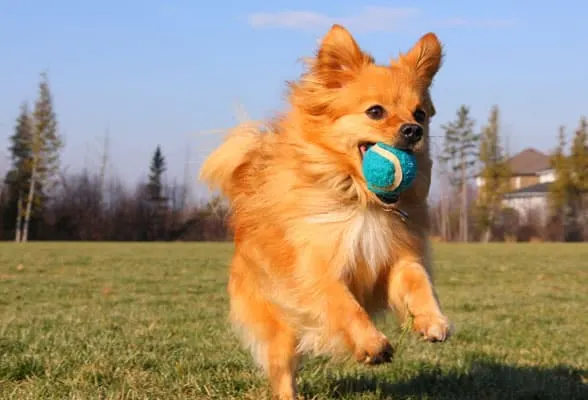
If your dog isn’t happy in your backyard, regardless of how solid you make your fence, she eventually will find a way to get out. You can put a lid on her urge to wander by making the yard a fun, enjoyable place for her to hang out.
Make sure she has her favorite toys, easy access to food and water, shade from the sun on hot days, and shelter in case she doesn’t want to play in the rain. If she likes your backyard, chances are that she’ll stay there.
Add A Backyard Pond
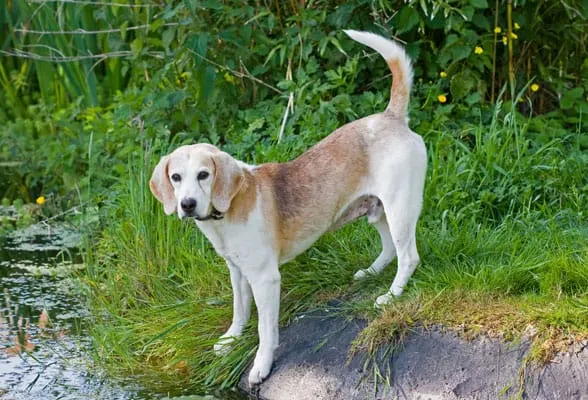
It’s not difficult to build a small pond, and it will make your yard look better and your dog will appreciate the opportunity to go for a cooling dip, especially when temperatures rise. Be sure the pond is shallow enough so that your dog can get in and out easily. Here’s what you’ll need:
- A hard plastic pond shell. They come in many shapes and sizes, but depending on how big your dog is, you might need to add a ramp or put bricks or gravel at the bottom to make the pond shallower.
- A pump. You can use the pump to provide power for a fountain and to empty the pond when you need to clean it. The pump also will keep the water moving, which should help keep mosquitoes from breeding and algae from forming.
- Flexible tubing. You’ll use the tubing to connect the pump to a fountain or waterfall.
Installing your pond is a reasonably uncomplicated task. All you’ll need to do is dig a hole and drop in the liner.
You can decorate the area around the pond with plants, mulch or stones.
If you don’t have a vehicle big enough to haul the pond shell back to your yard, you can click here to see The Home Depot truck rental options.
Add Protection from the Sun
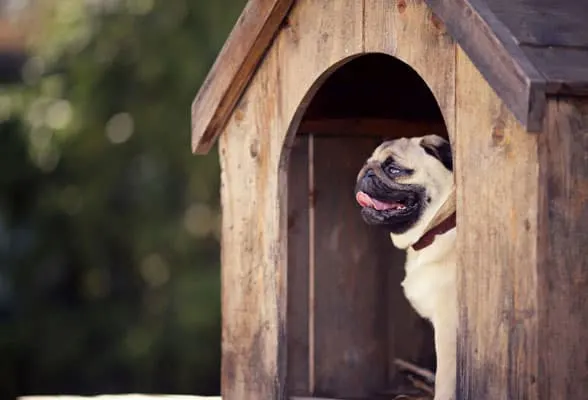
Overheating can be dangerous for your dog — they need to have plenty of shade. That’s not a problem if you have lots of trees in the yard, but if you don’t, you’ll need to provide him with some way to get out of the sun.
With just a few supplies, you can easily build your pal a place to cool off.
- Composite decking material
- A miter saw
- A jigsaw
- A piece of outdoor upholstery
- A corner clamp
- Some screws and nails
Gather those tools and build your dog a shelter that will protect him from the sun and rain.
Want to make to make the cool shelter for your best buddy, but don’t want to buy the tools you need? No problem, you can rent them. To see the range of rental tools that The Home Depot has to offer, including the miter and jig saw you need to make the above project, click here.
The Path of Least Resistance
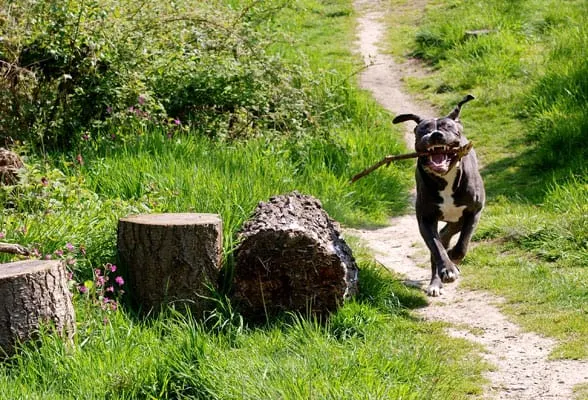
Paths are another option that will both beautify your yard and add to your dog’s enjoyment. Keep in mind that different breeds have different ideas about where paths should be.
For example, guarding breeds like to patrol the perimeter, while herding breeds prefer to move in circles. A path can be nothing more than grass with a border, but you also can go with mulch, wood chips or rock.
Create A Dog Potty Area
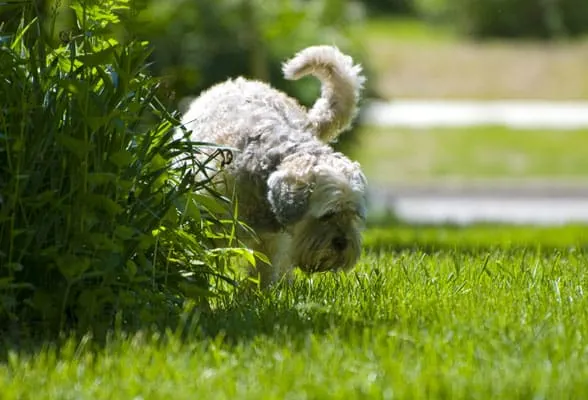
You and your dog will both enjoy your yard more if you encourage him to answer the call of nature in one spot, rather than all over the place.
Here’s what you’ll need to build your dog a potty area:
- Fiberglass screen
- Sand pebbles
- Pea gravel
- 2″ x 6″ boards
- A shovel
If the area is inviting, your dog is much more likely to make it their ‘regular spot.’
Pin It to Remember It!
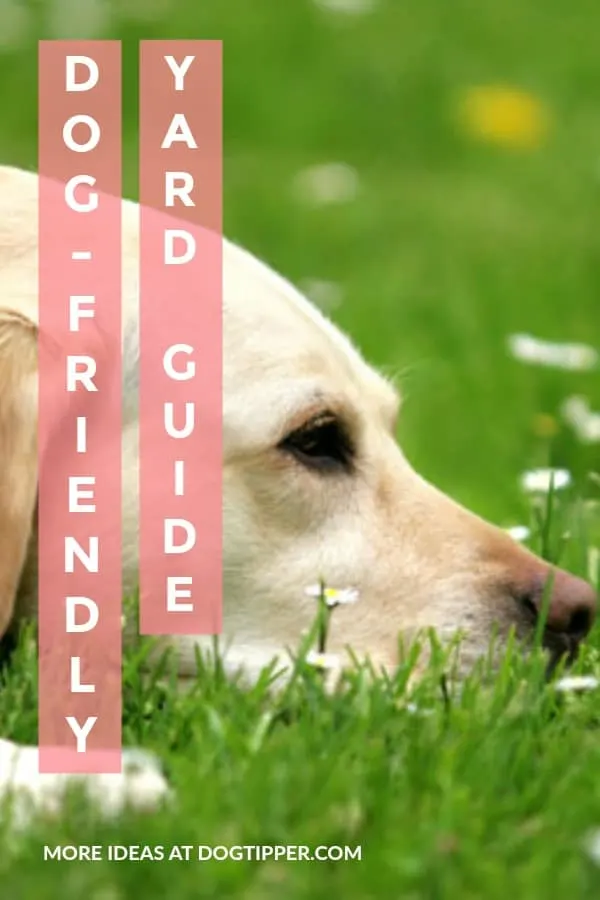
What other steps have you taken to create a dog-friendly backyard? Let us know what you’re doing to keep your dog happy on Twitter @DogTipper or on Facebook.
- Selecting the Best Online Emotional Support Animal Letter Service - December 14, 2023
- How to Store Dog Toys –10 Solutions to Organize Those Toys! - July 7, 2022
- Best Practices to Puppy-Proof Your Home - June 27, 2022
